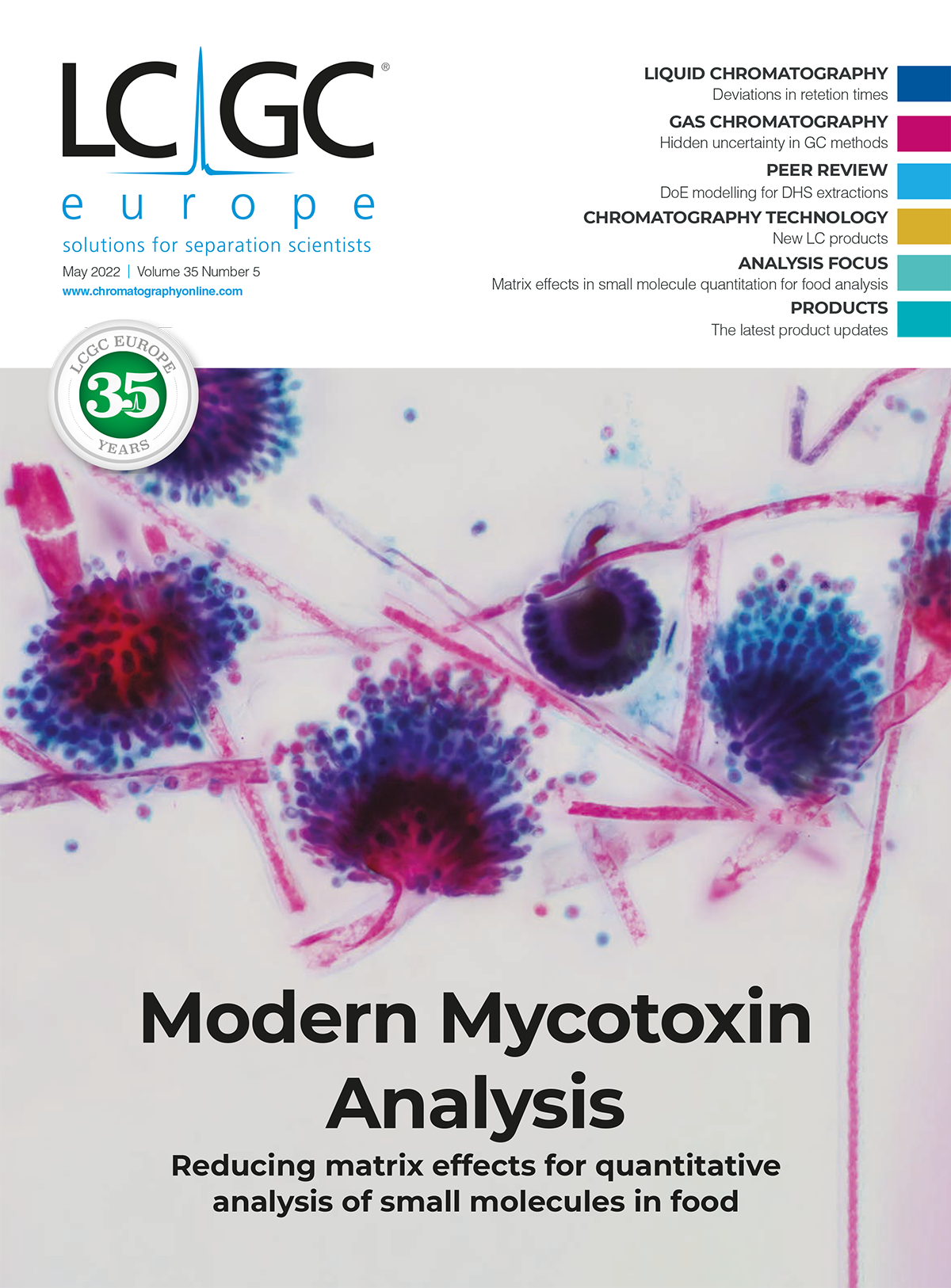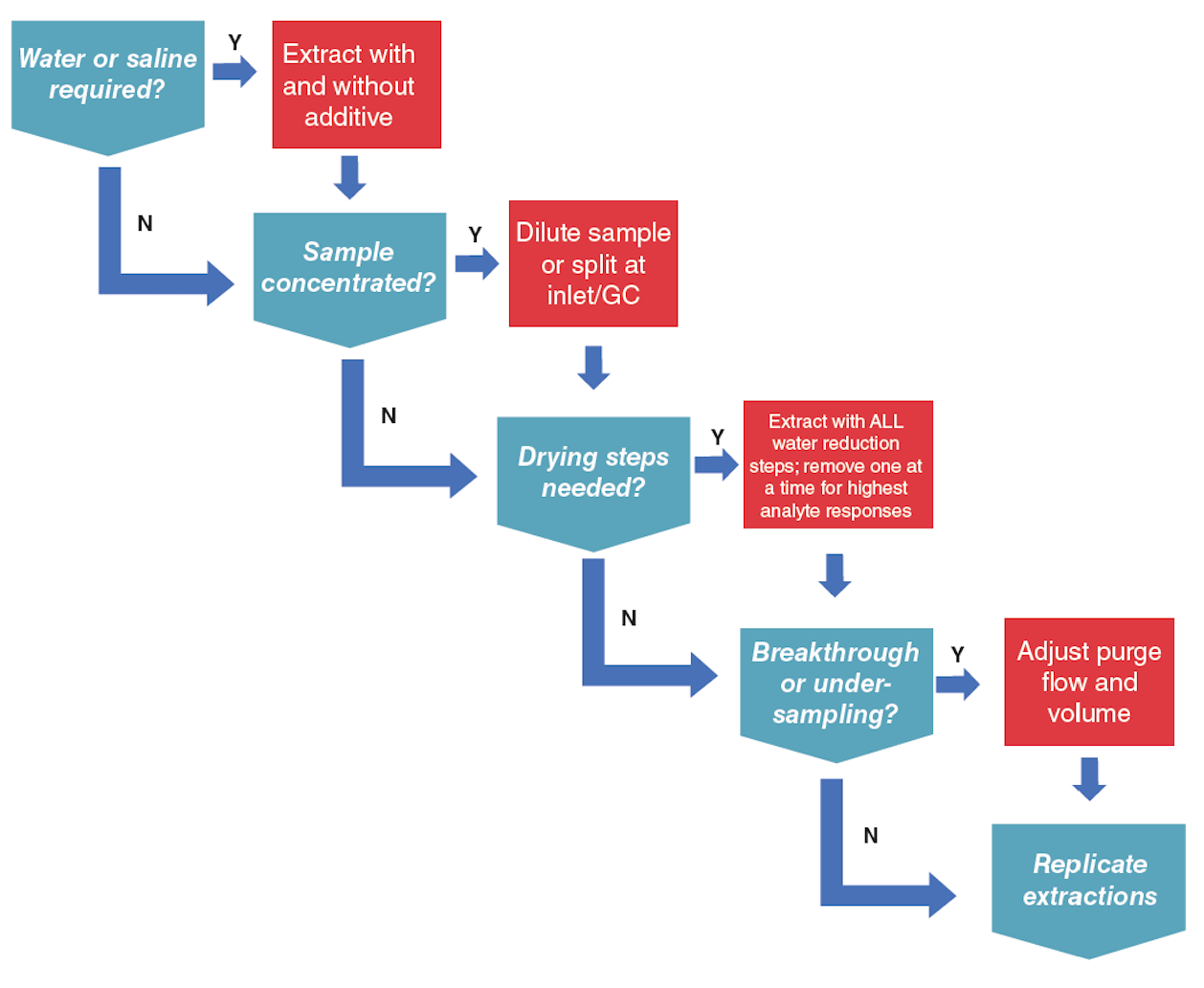Taking the Red Pill: Alleviating Matrix Effects for Small Molecule Quantitation in Food and Feed
Matrix effects continue to be an issue in small molecule quantitation in food analysis, with researchers exploring different approaches to circumvent the issue. LCGC Europe talked to Rudolf Krska and Michael Sulyok from the University of Natural Resources and Life Sciences (BOKU), Vienna, Austria, about their work to develop a multi-analyte approach using liquid chromatography tandem mass spectrometry (LC–MS/MS), and the issues surrounding agrocontaminants in animal feeds.
Q. Liquid chromatography–tandem mass spectrometry (LC–MS/MS) has become ubiquitous for the quantitative determination of small molecules in food and feed samples. However, according to your 2020 paper (1), matrix effects continue to be an issue for those using an LC–MS/MS method—in particular for multi-analyte approaches. What are the issues surrounding matrix effects in this area?
Rudolf Krska:Matrix effects are an issue in various analytical techniques. For LC–MS using both high-resolution (HR)MS and tandem MS, matrix components coeluting with analytes of interest influence the ionization efficiency of the latter. This decreases—and on rare occasions increases—their analytical response in the sample extract compared with the same analyte concentration in a neat solvent standard, and thus compromises the accuracy of the method. The classical approach of dedicated sample clean-up (such as by an immune-affinity clean-up) to remove the matrix components is limited to single target analytes or a group of analytes, although there are approaches involving combining different antibodies (2,3). An example of this would be for the mycotoxins addressed by regulatory limits. The same is true for stable isotope labelled internal standards that compensate losses during ionization and are therefore the preferable option for official control analysis, but they are available for only approximately 20 compounds (4). This leaves the option of matrix matching, which can be defined as preparing the calibration curve in sample extracts instead of solvent-based standards for methods that target a broader range of compounds. However, there are some difficulties in executing this approach, including the lack of samples that are true blanks for all the analytes, or accommodating samples from different matrices in one analytical sequence.
Q. The method you published in your 2020 paper was a “dilute-and‑shoot” method and covered more than 500 secondary metabolites, including all mycotoxins addressed by regulatory limits as well as emerging and masked mycotoxins in seven different food matrices. What did the obtained data indicate about the applicability and practicability of the current guidelines for method validation on such a broad method?
Michael Sulyok: Following non-LC–MS-specific guidelines results in a considerable consumption of time for data analysis, particularly for levels close to the estimated limit of detection/limit of quantification (LOD/LOQ), which requires manual inspection of each peak. As it took close to two years to evaluate and compile all data for our 2020 publication, it was our aim to come up with a proposal to reduce this burden without compromising the overall assessment of the method performance. We believe that spiking experiments at low concentration levels are not essential as we found recoveries to be independent of the concentration level, and also it is feasible to come up with a conservative estimation for LOD/LOQ that is independent of the matrix. Instead, the focus should rather be on absolute and relative matrix effects, which can be studied at high concentrations that result in peaks that are reliably processed by automatic peak integration. In addition, our data did not support the concept of matrix groups mentioned in some guidelines. Differences in apparent recovery between the individual nut, grain, and dried fruits matrices indicated that matrix effects should be characterized for each new matrix, even if it is similar to another commodity that has already been evaluated.
Q. What conclusions were reached on the current guidelines and what were the recommendations for improvement?
RK: There is a lack of recommendation to what extent matrix effects are acceptable, which is true both for the absolute extent, namely the difference in signal intensity to the identical concentration of a given analyte in neat solvent, as well as for the difference in matrix effects between different individual samples, such as different varieties, brands, and so forth of a given matrix, which is known as relative matrix effects. Even extreme absolute matrix effects may be compensated for in principle by matrix matching, but it may be questioned whether a method can be considered valid in such a case. In contrast, the issue of relative matrix effects cannot be overcome by matrix matching and is neglected in many publications focusing on method validation. This may be partially explained by the fact that many guidelines foresee determination of repeatability on technical replicates, such as “identical test items” or “18 aliquots of a blank material”, which implies to some extent that any individual sample is representative for all samples of the same matrix. In our work, we emphasize that different individual samples should be included in the validation set.
Q. A further paper published in 2020 presents a comprehensive quantitative LC–MS/MS approach for the analysis of agrocontaminants in animal feeds. What challenges exist in the analysis of animal feeds and why are they important?
MS: Animal feed is particularly challenging because the fractions of the main ingredients vary to a large extent, thus emphasizing the issue of relative matrix effects. In addition, finding samples that are true blanks for all analytes of interest is close to impossible, which makes it difficult to find a suitable sample set for method validation. We have proposed to prepare model samples from the related single feed ingredients mirroring the common ranges of the exact composition.
Q. The paper mentions the construction of a prevalence database. What is the function of this database?
RK: The database intends to link occurrences of mycotoxins and fungal metabolites with complementary data, such as origin, weather, or agricultural practice. This serves to identify particular hot spots of mycotoxin contamination in the global supply chain of feed ingredients and finished feed, and also to monitor changes in the pattern of mycotoxins/fungal metabolites on a larger time scale due to global warming.
Q. Did you encounter any challenges in carrying out this research with regards to the instruments and methodologies available?
MS: In our multi-class paper, we explored the limits of data acquisition in tandem mass spectrometry, which is strictly consecutive, meaning that for a given time period (dwell time) on the scale of tens of milliseconds, only one MS/MS signal of one given analyte is scanned. This runs into the problem of not having sufficient acquisition time in the case of hundreds of analytes, even if the “scheduled multiple reaction monitoring mode” is applied, namely scanning a particular analyte only within a pre-defined period at the expected LC retention time. We have shown that reducing the number of data points per peak while keeping the dwell time as high as possible results in an acceptable data quality. However, we think our method is close to the limit of what is feasible in terms of number of analytes—if an even faster scanning technology is not feasible in tandem mass spectrometry, methods comprising even more analytes need to be transferred to HRMS in full-scan mode.
Q. Does the method have applications in other areas of research?
RK: Our multi-class paper has proven that our “dilute‑and‑shoot” approach is not limited to mycotoxins, although other contaminants might pose problems, such as the solubility and stability issues of certain sub‑classes of veterinary drugs. We believe that our considerations on method validation for such broad methods can be extrapolated to LC–MS‑based methods dealing with other contaminant classes and matrices.
Q. What are you currently working on?
MS: Our current work in the area of LC–MS/MS method development focuses on various aspects. We are investing a lot of time and effort in the validation of a further extended multi‑class method, including some toxic metabolites such as byssochlamic acid, in processed grain-based products. Considering the plethora of secondary metabolites of plants and fungi present in food crops, even the 1250+ method does not suffice. We are also studying the metabolization of mycotoxins by insects and plants by utilizing a stable isotope-assisted LC–HRMS metabolomics-based approach in a functional genomics context.
References
- D. Steiner et al., J. Chromatogr. A 1629, 461502 (2020). https://doi.org/10.1016/j.chroma.2020.461502
- B. Greer et al., TrAC 141, 116284 (2021). https://doi.org/10.1016/j.trac.2021.116284
- V.M.T. Lattanzio et al., J. Chromatogr. A 1354, 139–143 https://doi.org/10.1016/j.chroma.2014.05.069
- www.romerlabs.com/shop/inter_en/reference-materials/biopure-standards/mycotoxins

Rudolf Krska is full professor for (Bio-)Analytics and Organic Trace Analysis at the University of Natural Resources and Life Sciences, Vienna (BOKU). He is head of the Institute of Bioanalytics and Agro-Metabolomics at BOKU´s Department IFA-Tulln. Currently, the former A/Chief of Health Canada´s Food Research Division in Ottawa is also Head of Strategic Research at the Austrian Competence Centre for Feed and Food Quality, Safety and Innovation (FFoQSI). Rudolf Krska has received 12 scientific awards and is (co‑)author of more than 440 SCI publications (h-index: 69, Scopus). In 2018, he has become jointly appointed Professor within the Institute for Global Food Security at Queen´s University, Belfast, UK. Since 2020 Prof. Rudolf Krska serves as President of the Austrian Society of Analytical Chemistry.

Michael Sulyok studied Chemical Engineering with specialization in Analytical Chemistry at the Vienna University of Technology and received his PhD in 2004 on the Synthesis and Characterization of Monolithic Stationary Phases for Liquid Chromatography. After that, he changed to the Department IFA-Tulln of the University of Natural Resources and Life Sciences Vienna, where he specialized on methods based on liquid chromatography coupled to tandem mass spectrometry for the simultaneous determination of hundreds of mycotoxins and fungal metabolites. In his work there is a strong focus on method validation in order to characterize the performance of modern LC-MS based multi-analyte methods with minimal or even no sample clean-up. The other focus is on the application of the method to study the overall pattern of mycotoxins and fungal metabolites in food- and feedstuffs and in the indoor environment. This has resulted in numerous international cooperations, more than 290 papers and the award of the Clarivate Highly Cited Researcher in 2018 and 2019.

Analytical Challenges in Measuring Migration from Food Contact Materials
November 2nd 2015Food contact materials contain low molecular weight additives and processing aids which can migrate into foods leading to trace levels of contamination. Food safety is ensured through regulations, comprising compositional controls and migration limits, which present a significant analytical challenge to the food industry to ensure compliance and demonstrate due diligence. Of the various analytical approaches, LC-MS/MS has proved to be an essential tool in monitoring migration of target compounds into foods, and more sophisticated approaches such as LC-high resolution MS (Orbitrap) are being increasingly used for untargeted analysis to monitor non-intentionally added substances. This podcast will provide an overview to this area, illustrated with various applications showing current approaches being employed.
Accelerating Monoclonal Antibody Quality Control: The Role of LC–MS in Upstream Bioprocessing
This study highlights the promising potential of LC–MS as a powerful tool for mAb quality control within the context of upstream processing.
University of Tasmania Researchers Explore Haloacetic Acid Determiniation in Water with capLC–MS
April 29th 2025Haloacetic acid detection has become important when analyzing drinking and swimming pool water. University of Tasmania researchers have begun applying capillary liquid chromatography as a means of detecting these substances.
Prioritizing Non-Target Screening in LC–HRMS Environmental Sample Analysis
April 28th 2025When analyzing samples using liquid chromatography–high-resolution mass spectrometry, there are various ways the processes can be improved. Researchers created new methods for prioritizing these strategies.

.png&w=3840&q=75)

.png&w=3840&q=75)



.png&w=3840&q=75)



.png&w=3840&q=75)








